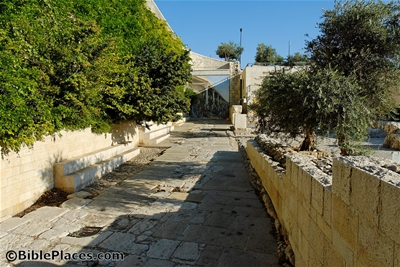The Jerusalem Post reports on the finds that we speculated on before (with photos). While they certainly uncovered some new things in the dig, the article does not mention any surprising finds. In short, any archaeologist could have predicted that digging in this place would reveal:
The Valley Cardo (aka Eastern Cardo): the full 35 foot (11 m) width of the street was uncovered.
This same street was uncovered about 150 feet (50 m) to the south.
A ritual bath (mikveh) from the Second Temple period. They have found 150 of these all over the city.
A portion of the Lower Aqueduct which brought water from Solomon’s Pools to the Temple Mount.
Numerous remains of this aqueduct have been found elsewhere, including slightly to the south outside the Old City wall.
An escarpment. The article suggests that this a significant discovery, but scholars have long believed that the natural defenses of the Western Hill made it more difficult for the Romans to capture in 70 A.D. Any casual observer can see the steep drop-off as one approaches the Western Wall from the west. For a while, some believed that the Western Hill must have been fortified on its eastern side in order to explain why it took the Romans a month to conquer the area. But no evidence of a wall has ever been discovered, and Josephus, who describes the city’s fortifications at length, never mentions a wall in this area.
These remains will be preserved under a new building for the Western Wall Heritage Foundation.
This is the same organization that controls access to the tunnel excavations north of the prayer plaza.
